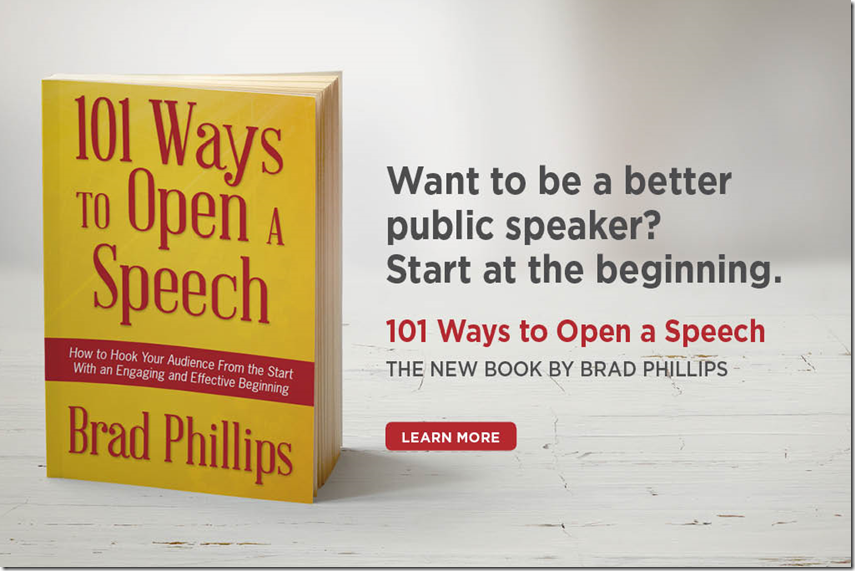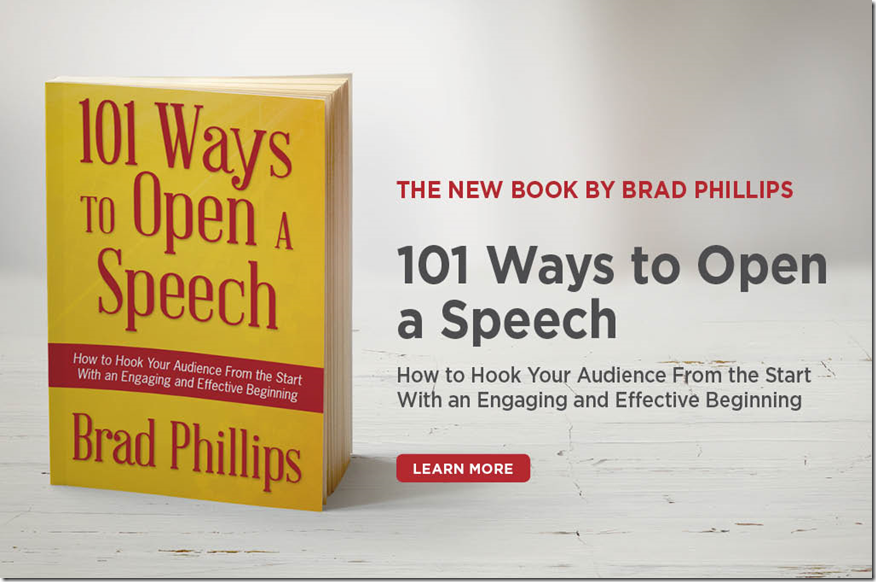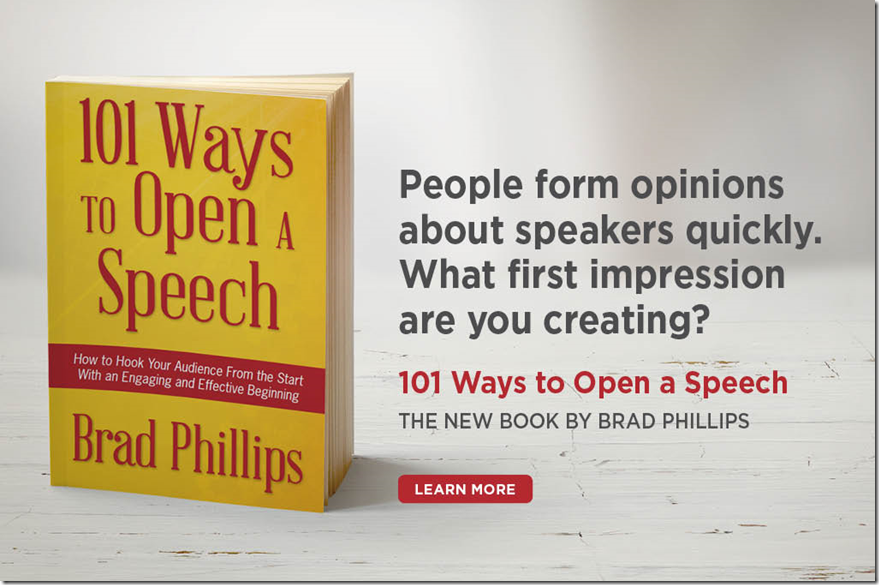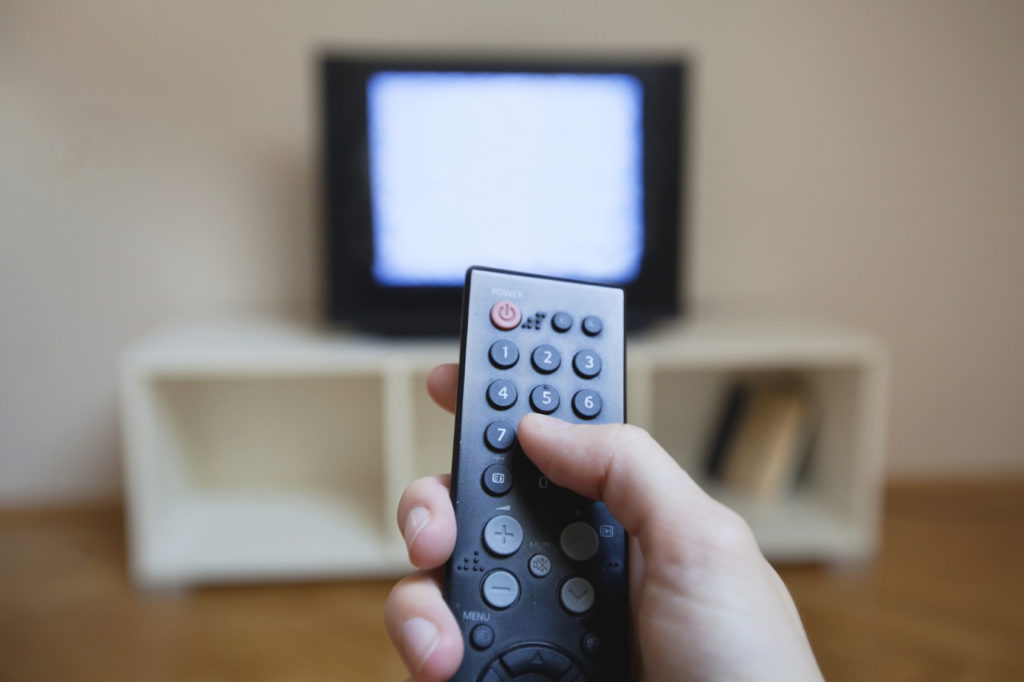Five (More) Great Ways To Open A Presentation
Since releasing 101 Ways to Open a Speech last July, I’ve published 10 of the book’s opens for free on the blog, along with its full introduction.
For this post, I revisited the 91 opens that I’ve never published here before and selected five of my favorites to share with you.
You can read the introduction here and several additional sample opens here.
If you benefit from these opens (or know colleagues, clients, or friends who might), you can order a softcover or Kindle edition. I’m confident you’ll get several new ideas — and your purchase is an easy way to support the 1,300 posts we’ve published for free here since 2010.
Without further ado, here are five proven speech openers!
Open One: The Unexpected Definition Open
In September 1980, just two months before Americans were to choose their next president, former California governor Ronald Reagan and incumbent Jimmy Carter found themselves deadlocked at 39 percent apiece, according to a Time poll. The United States was mired in an economic recession at the time; inflation was in double digits and unemployment was at near-record levels.
In an effort to paint President Carter as out of touch, Mr. Reagan cleverly redefined three terms during a speech in New Jersey:
“[Carter’s] answer to all this misery, he tries to tell us that we are only in a recession, not a depression. As if definitions, words relieve our suffering … If it’s a definition he wants, I’ll give him one. A recession is when your neighbor loses his job. A depression is when you lose yours. And recovery is when Jimmy Carter loses his.”
Rather than offer a classic dictionary definition of those terms, Reagan redefined them in an unexpected way that delighted his audience and earned enthusiastic cheers.
Redefining terms can have an oversize impact on your audience. If you’re speaking to a group of “stay-at-home” parents, for example, you might redefine the term like this:
“Unlike most people, you know exactly what it means to be a ‘stay-at-home’ parent: driving to the park so your little ones can run around, taking them to the doctor, going grocery shopping, stopping at the art supply store so they have a project on a rainy day. When you think about it, I’m not sure why we’re called ‘stay-at-home’ parents — we’re rarely home! It would be far more accurate to call us what we really are: ‘on-the-run’ parents.”
Open Two: The Newscaster Tease Open
News anchors are experts at keeping viewers tuned to their programs. Before tossing to commercial breaks, newscasters often deliver a compelling “tease” intended to hook people and prevent them from flipping to a different station.
Unless you’ve consumed unusually little mass media, you’ve probably heard thousands of news teases:
“Did the local sports team win tonight’s big match against their rivals? We’ll tell you, next.”
“A well-known politician got into a screaming match with reporters today. The video, after this break.”
“Which movie just earned six Academy Award nominations and leads this year’s pack? Our film critic has the rundown, right after the weather forecast.”
This open borrows from that technique by adding similar teases to the more traditional “summary open.” For instance, you might begin a talk about the overall performance of the U.S. economy in the last quarter by saying:
“The market sent mixed signals last quarter. Today, I’ll talk about why the stock market was up, why the housing market was down, and why consumer spending hasn’t budged in almost a year. Along the way, you’ll learn why Ford can’t seem to sell big trucks this year, why France will have more homeless retirees in five years than we have here in the United States, and why one unusual but reliable signal tells us that the same stocks that led the recent rally may soon go bust.”
In that example, the second sentence contains the summary open, and the third adds the more engaging newscaster tease.
Open Three: The Show of Hands Open
One of the most overused presentation starters is the “show of hands” question. The problem isn’t usually with the device itself, but with the ham-handed manner in which it’s used.
Too often, speakers ask a question that leads nowhere: “How many of you have used this new product? Oh, okay, great.” Worse, they ask a patronizing question: “How many of you would like to earn more money?” Audiences bristle at such condescensions. Participation for its own sake isn’t enough.
The question you pose should challenge conventional thinking, lead to a counterintuitive conclusion, or add an unexpected dose of humor. It should allow members of the audience to see how their answers compare to those of their peers, perhaps leading them to reconsider their previously held positions.
Great opening questions must lead somewhere, so connect the audience’s response to your next comment — and prepare several different transitions in case you receive an unexpected result.
For example, an expert in body image research might ask:
“If given a choice, who here would rather be completely blind — for the rest of your life — than obese?”
Assuming very few people raise a hand, the expert could connect the audience’s response to the main point this way:
“It appears that this audience would overwhelmingly choose the gift of sight, even if that means living as an obese person. But you’re not the norm. Research from Arizona State University found that one in seven women would prefer blindness to obesity. That tells you a lot about how much emphasis our culture places on physical appearance — and that comes at a high cost to our health.”
Open Four: The Rapid-Fire Statistics Open
On the previous page, I wrote that statistics without context tend not to stick. So you might be surprised that there are times I recommend “drowning” your audience with a rapid-fire series of statistics that individually don’t contain much context.
Facebook COO Sheryl Sandberg demonstrated why that works when she opened her TED Talk with five quick statistics:
“The numbers tell the story quite clearly. A hundred ninety heads of states, nine are women. Of all the people in parliament in the world, 13 percent are women. In the corporate sector, women at the top, C-level jobs, board seats, tops out at 15, 16 percent. The numbers have not moved since 2002, and they’re going in the wrong direction. Even in the nonprofit world, a world we sometimes think of as being led by more women, women at the top, 20 percent. We also have another problem, which is that women face harder choices between professional success and personal fulfillment. A recent study in the U.S. showed that of married senior managers, two-thirds of the married men had children and only one-third of the married women had children.”
Sandberg’s quick succession of statistics doesn’t succeed in making any individual number particularly memorable — few audience members will remember the specific figures — but works for a different reason: her drumbeat of data creates an overall impression.
For her purposes, it wasn’t important that people watching her speech remembered any particular data point. It was more important that they remembered her broader points — such as the fact that professional women are underrepresented at the executive level — and if her opening statistics communicated that message to her audience, they served their purpose perfectly.
Open Five: The Nonexpert Quote Open
In 2009, New York-Presbyterian Hospital began running a series of television commercials called “Amazing Things Are Happening Here.” The advertisements featured real people — including patients and parents of pediatric patients — who received care at the hospital.
Advertising Age called the campaign a “game changer,” writing:
“While testimonials are hardly a new idea in hospital advertising, New York-Presbyterian’s approach stands out. Shot in polished black and white, and lacking the tear-jerking background music that characterizes many ‘testimonial’ style hospital ads, the films are unadorned, intimate portraits of real former patients … Not only do they … not feature actors, the ads are unscripted and their subjects appear real and natural. Heather McNamara, for instance, mispronounces the name of the hospital in a way that any nine-year-old understandably might; it wasn’t edited out.”
You can quote a patient, a janitor, a customer, a “man on the street,” a woman you once sat next to at a dinner party, your spouse’s college friend, a stranger who experienced the same situation the audience finds itself in right now, or anyone else who is unknown — but has wisdom to offer — to your audience.
This open also works for another reason: “real people” often do more to sway audiences than experts. As Robert Cialdini writes in Influence: Science and Practice, “We like people who are like us, and we are more willing to say yes to their requests, often in an unthinking manner.”
Quoting a “real person” to whom the audience relates can help strengthen the audience’s bond with you; after all, you’re the person who had the wisdom to regard a person the audience deems trustworthy as deserving of mention, so you will receive the credit from the audience.






#4 reminds me of Jeff Daniel’s monologue from the first episode of the Newsroom.
[…] Five (More) Great Ways to Open a Presentation By Brad Phillips from Mr. Media Training As stated in a previous entry, I’m a huge fan of […]
I have both your books. They’re invaluable resources. I still love it when you share excerpts because I need to be reminded from time to time of some of these ideas.
Nancy,
Thanks very much for your kind words and continued support. I’m delighted to know that my books have been serving as a useful resource for you!
Best,
Brad